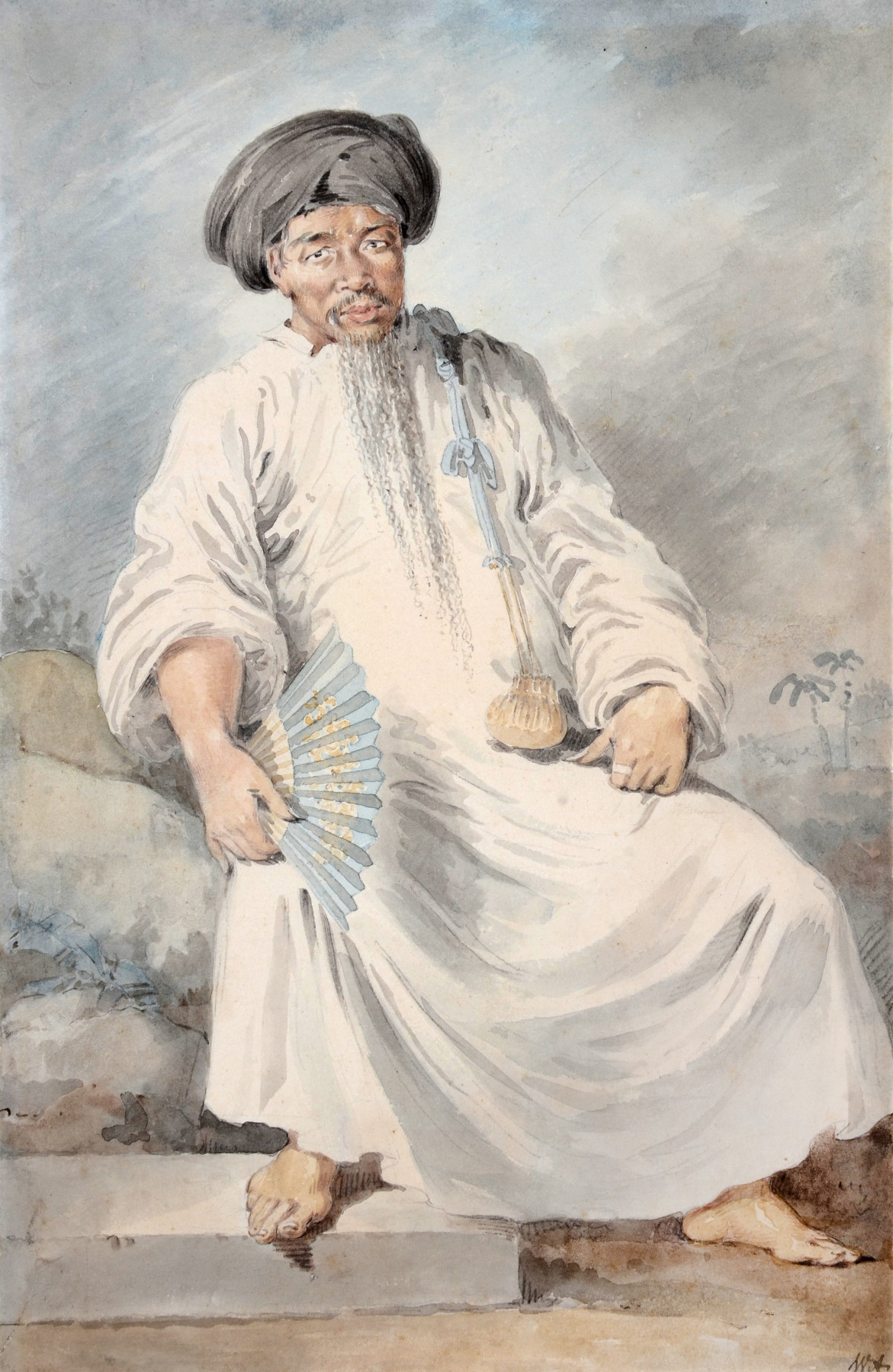
(click image to enlarge)
William Alexander acted as junior draughtsman to Lord Macartney’s embassy to China during the years 1792-94. For a fortnight of June 1793, the embassy stayed at Turon Bay, and it was during that time that Alexander produced the study on which the present watercolour is based.
Turon is now the city of Dà Nang in Vietnam. In developing trading rights with the country during the seventeenth and eighteenth centuries, the French called the city ‘Tourane’ as a corruption of the Vietnamese phrase ‘Cua Hàn’, meaning the mouth of the Han River, on which the city sits. In turn, the name was adapted to ‘Turon’. Turon was in Annam, the central one of Vietnam’s three provinces, though British visitors often called the region ‘Cochin China’. In 1787, just six years before Alexander’s visit, the ascendant ruler, Nguyen Ánh, ceded Turon to the French in return for a promise of aid.
On 3 June 1793, Alexander recorded in his journal, ‘This morning a Mandarin from court ... came on board to see our ship ... with another of inferior rank who sat a few minutes while I made a slight sketch of him ... I persevered in keeping the sketch so he went out in a huff ’ (Sloman 1980, page 9). He inscribed the sketch, ‘An Inferior Mandarin of Turon Bay’. He also made a sketch of a pipe-bearer, and went on to work up the two drawings into finished watercolours before combining them in a composition. This was then engraved by James Caldwall on 12 April 1796 as A Mandarine or Magistrate of Tourane Attended by His Pipe-Bearer, and published in Volume 3 of Sir George Staunton’s An Authentic Account of An Embassy from the King of Great Britain the Emperor of China, London: G Nicol, 1797. The original sketches entered the collection of Lord Macartney.